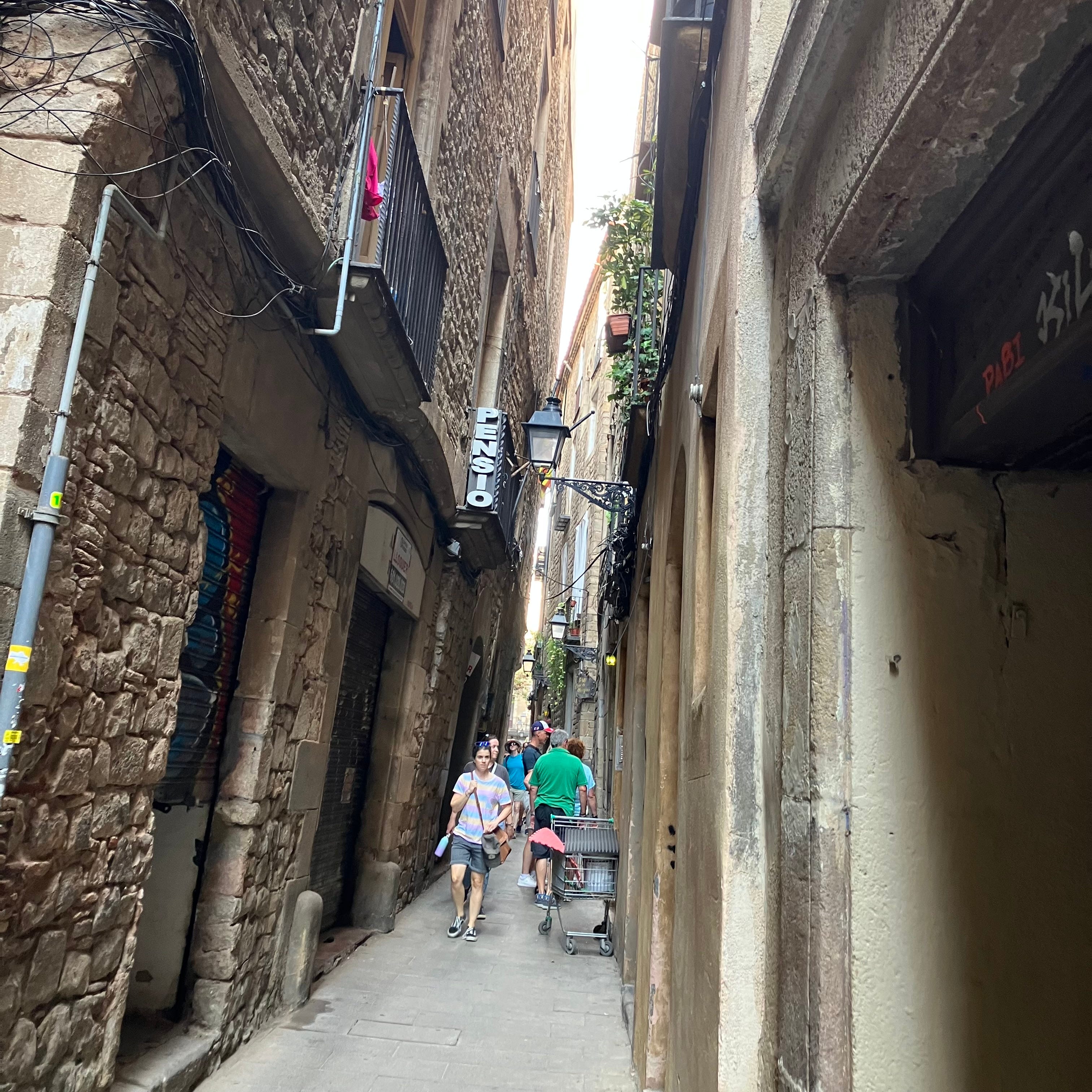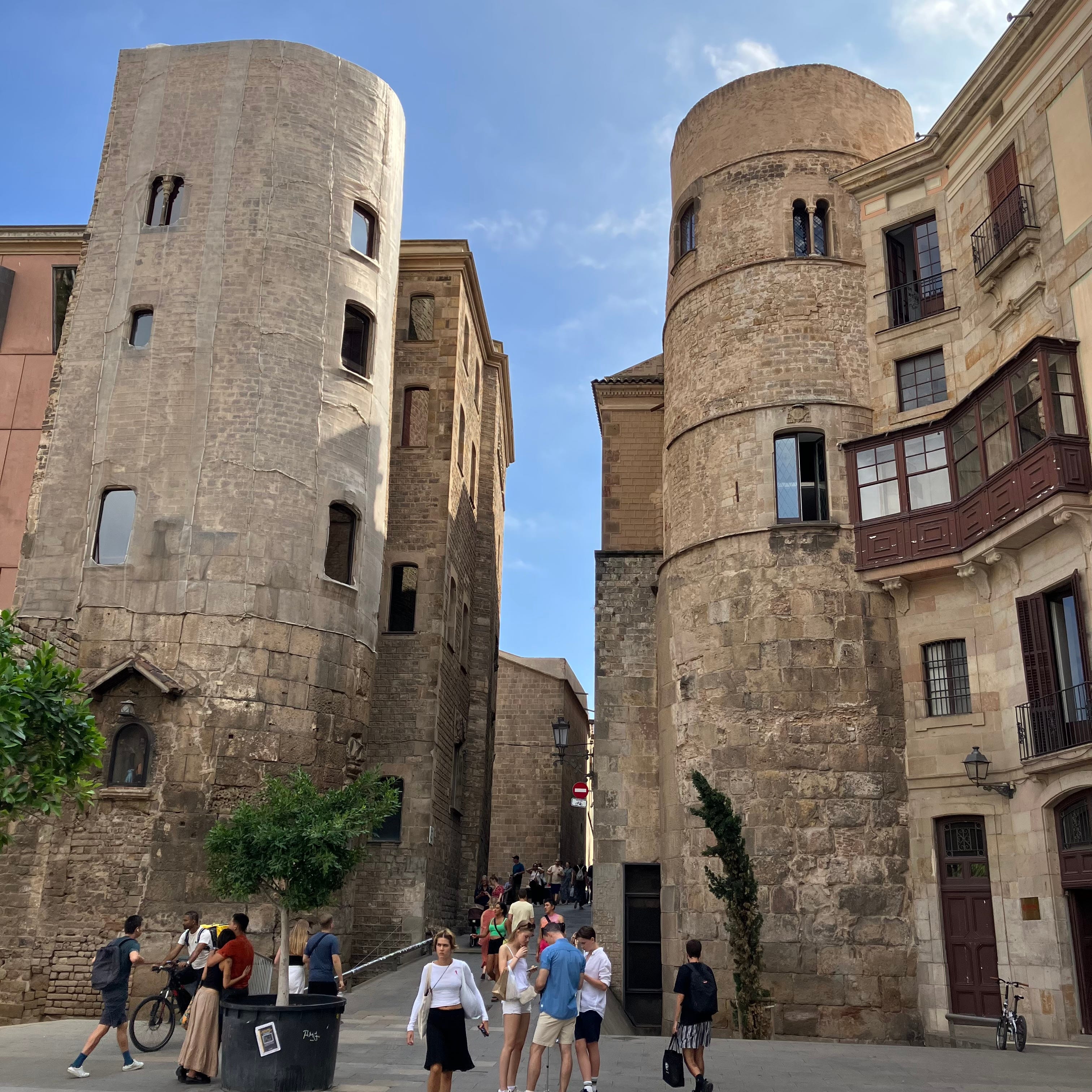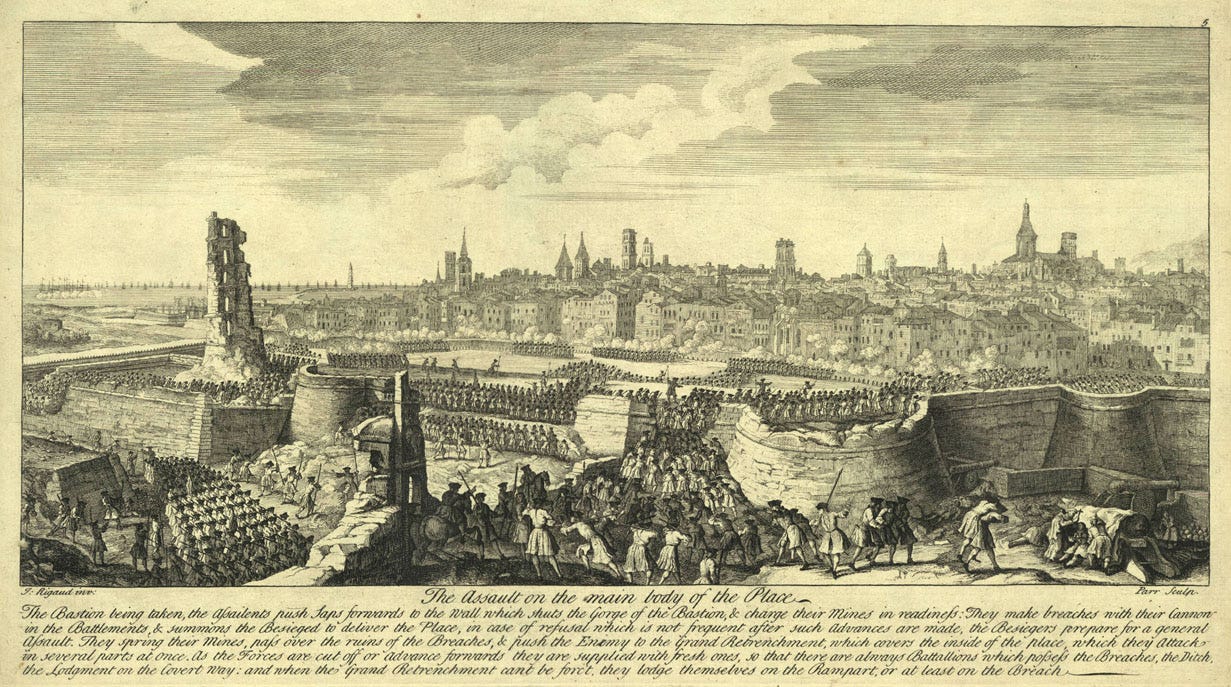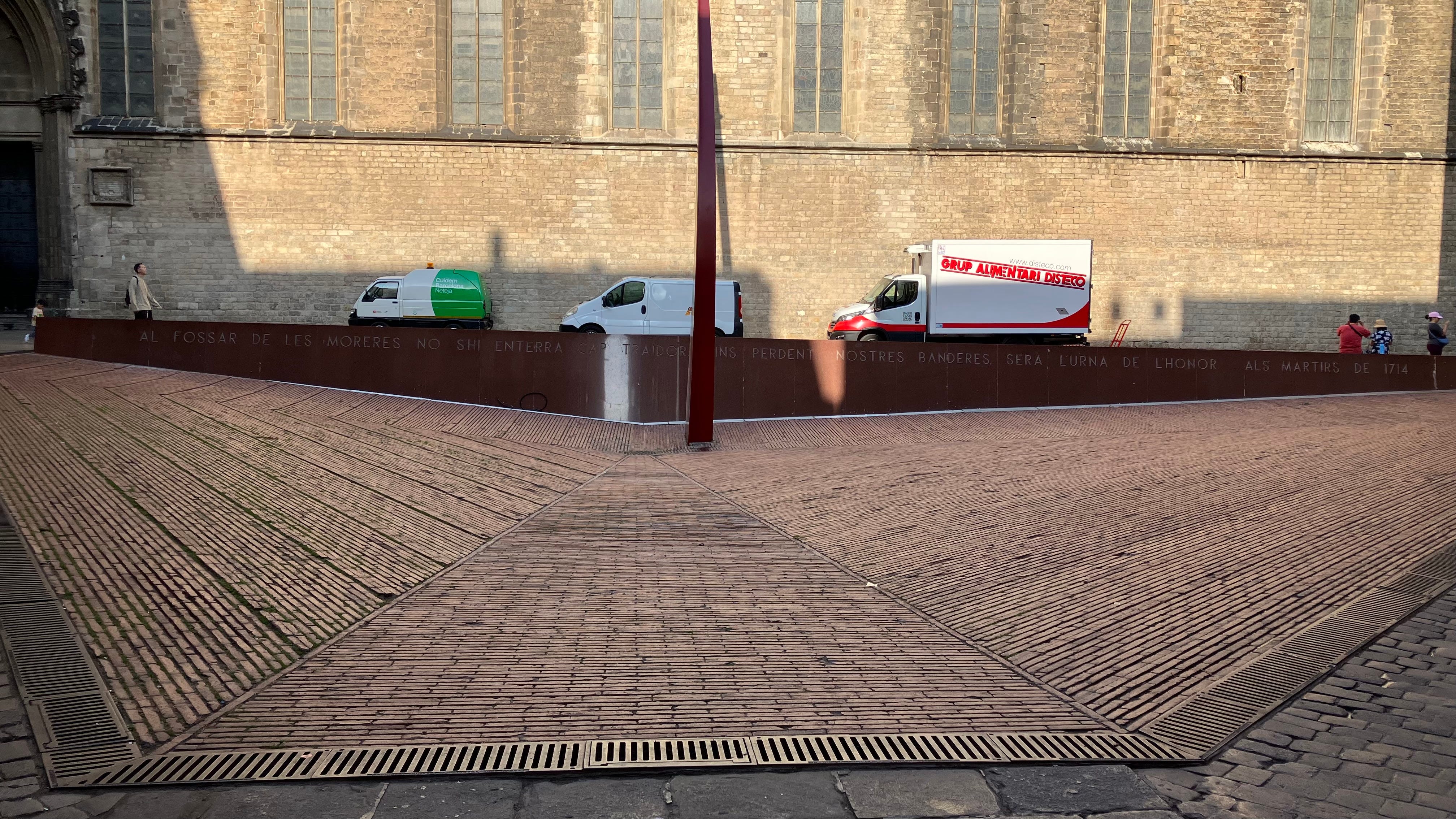Me and my Gòtic GF (Gated Fortification)
Phillip V had no chill, nationalism continues to be a hell of a drug
The Barri Gòtic (Gothic Quarter) of Barcelona is the oldest part of a pretty old city. The Romans redrew the place as a military camp in 15 BCE, so while you might expect the common grid pattern with major diagonals they used everywhere, the winding maze-like streets you find instantly tell you: this place is much older than that.

I’ve only really encountered this situation one other time - in another extremely old city, Prague - where you are compelled to just give up on following real directions and instead just head broadly in the compass orientation of your destination. There are enough pathways you can’t really “miss” a turn and backtracking is trivial if needed. The streets are organically human generated rather than planned. It’s cool.

Speaking of the Romans, the Empire had a fucking rough 3rd century. Arguably it came out of it a different thing completely1. One thing they were was more defensively minded, and that’s where these city walls come in. You can still walk on the remaining chunks of them in the lovely Barcelona City History Museum.
The history of the city is long and interesting, but perhaps the most enduring cultural memory involves the crushing defeat of Catalonian independence in the War of Spanish Succession in 1715.


That the locals have not entirely gotten over this is understandable.2 The monarchy didn’t just slaughter the defenders, they also displaced thousands of homes and families to slap a huge star fort down adjacent to the heart of the city - its guns trained not just on the harbor, but on the city itself in a message that would not be lost on anyone anytime soon.
The Catalonians had never been a fan of the central Spanish government and this did little to endear them to it.
This tension persists to this day (Foreign Exchanges, Oct 3):
King Felipe VI of Spain tapped Socialist Party leader and current caretaker Prime Minister Pedro Sánchez to form a new government on Tuesday, following the failure of People’s Party leader Alberto Núñez Feijóo’s bid last week. Sánchez is thought to have a slightly smoother path toward winning a confirmation vote than Feijóo had, but he’ll need to curry favor with Catalan separatists and Basque nationalists to do it and it very much remains to be seen whether he’ll be able to pull that off.
Good luck!
The central government continued to try to keep Catalonian separatism in check by prohibiting the city of Barcelona from expanding outside its city walls - yes the 3rd century city walls - until well into the 1860s. When they finally relented, city planners had an almost blank slate to work with. What they did with that opportunity was pretty goddamned awesome and will be the subject of my next post.
This is why I think it is kind of silly to talk about “The Fall of Rome” generally. It turned into very different things in its crazy-ass long lifespan. We like to think about hard stops and discrete cataclysms both for simplicity and because the notion of apocalypse is somehow compelling - see the enduring popularity of media on that topic - but the more you read about history you realized that just isn’t how it works. Draw a line on a year and there are people before and after it and they are usually the same people. ↩
The city has seen worse of course. The Black Plague did a real number on the place. And the sacking in 985CE by the Umayyad effectively zeroed-out the population (killed or enslaved). But that stuff is distant enough in time so as not to jump to top of mind. ↩




